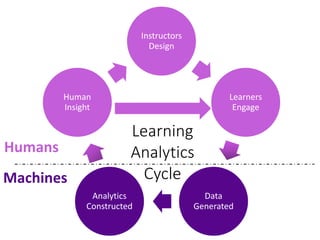
In today’s rapidly evolving educational landscape, the integration of technology has given rise to innovative tools and methodologies that enhance the learning experience. One such innovation that holds immense potential for educators and institutions is learning analytics. This article will delve into the world of learning analytics, exploring its definition, significance, implementation, and its transformative impact on the field of education.
1. Introduction
Education has undergone a remarkable transformation in recent years, with digital tools and platforms becoming integral to the learning process. Among these innovations, learning analytics stands out as a powerful tool that has the potential to revolutionize education. This article aims to provide a comprehensive understanding of learning analytics, from its definition to its practical applications.
2. What Is Learning Analytics?
Learning analytics is the process of collecting, analyzing, and interpreting data from various educational platforms and systems to gain insights into student performance, engagement, and learning outcomes. It involves the use of data-driven techniques and algorithms to inform educational decision-making.
3. The Significance of Learning Analytics
Learning analytics empowers educators and institutions to make informed decisions about curriculum design, teaching methods, and student support. By leveraging data, educators can identify areas where students may struggle, adapt teaching strategies, and provide timely interventions to enhance learning outcomes.
4. How Learning Analytics Works
At its core, learning analytics relies on the collection of data from various sources, such as learning management systems, online assessments, and student feedback. This data is then processed and analyzed to generate actionable insights.
5. Key Components of Learning Analytics
Learning analytics encompasses several key components, including data collection, data analysis, visualization, and predictive modeling. These components work together to provide a holistic view of the learning process.
6. Benefits of Implementing Learning Analytics
- Improved Student Performance: Learning analytics helps identify struggling students and provides targeted interventions to support their progress.
- Enhanced Teaching Strategies: Educators can tailor their teaching methods based on data-driven insights.
- Resource Allocation: Institutions can allocate resources more effectively, optimizing their educational programs.
- Personalized Learning: Learning analytics enables the customization of learning experiences for individual students.
7. Challenges and Ethical Considerations
While learning analytics offers numerous benefits, it also raises ethical concerns related to data privacy, security, and potential biases in algorithms. It is crucial for institutions to address these challenges when implementing learning analytics.
8. Successful Case Studies
Several educational institutions have successfully implemented learning analytics to improve student outcomes. These case studies highlight the transformative potential of this technology.
9. Future Trends in Learning Analytics
The field of learning analytics is continually evolving, with emerging trends such as real-time analytics, AI-powered insights, and cross-institutional collaborations shaping its future.
10. Integrating Learning Analytics in Educational Institutions
Implementing learning analytics requires careful planning, investment in technology, and training for educators and staff. This section explores the steps involved in integrating learning analytics into educational institutions.
11. Training and Skill Development
To harness the full potential of learning analytics, educators need training and skill development to effectively interpret and apply data insights in their teaching practices.
12. Ensuring Data Security and Privacy
Protecting student data is paramount. Educational institutions must establish robust data security and privacy measures to safeguard sensitive information.
13. Measuring the Effectiveness of Learning Analytics
Evaluating the impact of learning analytics is essential. Metrics such as student retention rates, academic performance, and student satisfaction can help gauge its effectiveness.
14. Conclusion
In conclusion, learning analytics holds immense promise in revolutionizing education. By harnessing the power of data, educators and institutions can improve teaching methods, enhance student outcomes, and create a more personalized learning experience. However, it is crucial to navigate the ethical considerations and challenges associated with data use to ensure its responsible and effective implementation.